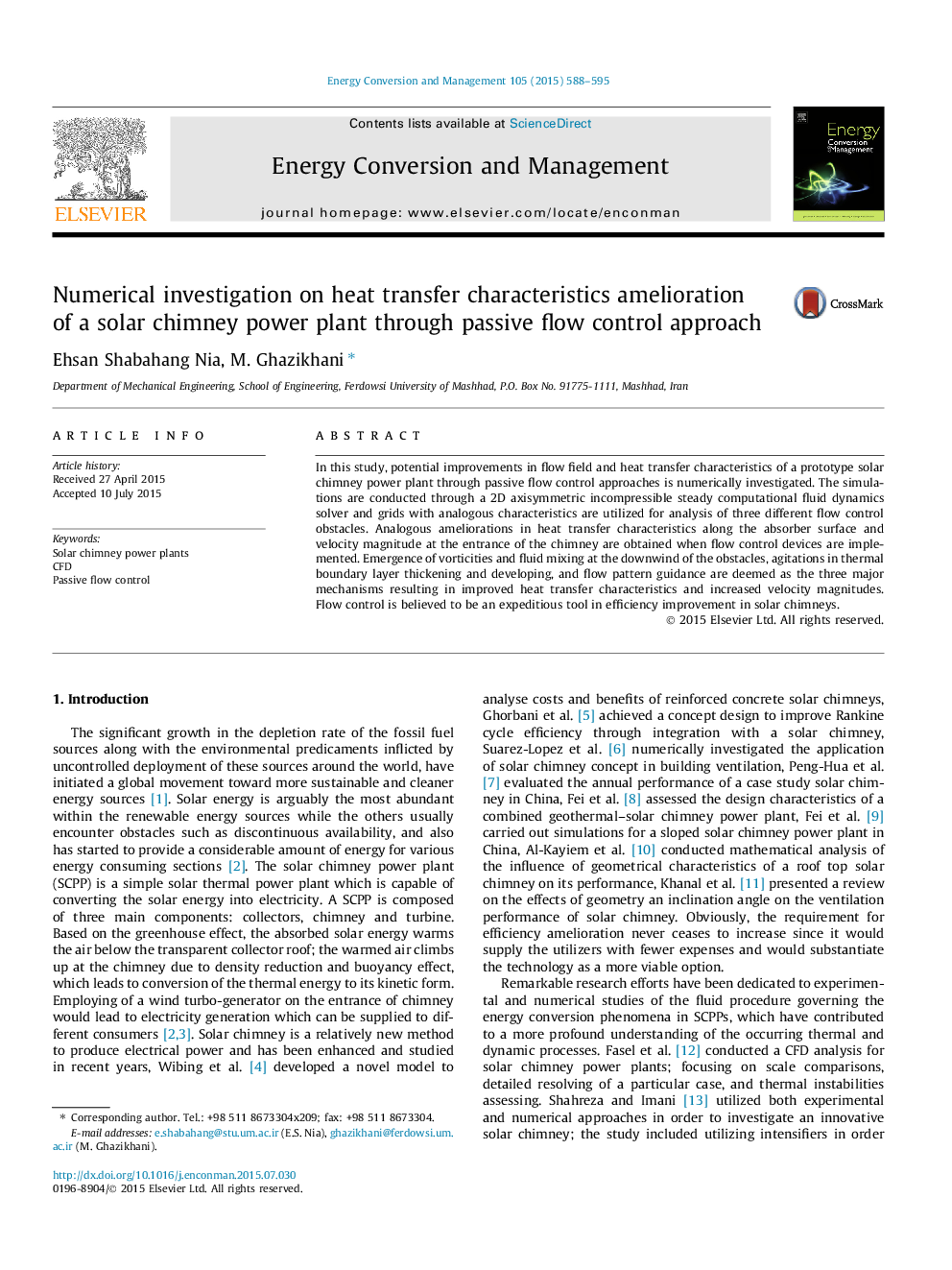| Article ID | Journal | Published Year | Pages | File Type |
|---|---|---|---|---|
| 7162043 | Energy Conversion and Management | 2015 | 8 Pages |
Abstract
In this study, potential improvements in flow field and heat transfer characteristics of a prototype solar chimney power plant through passive flow control approaches is numerically investigated. The simulations are conducted through a 2D axisymmetric incompressible steady computational fluid dynamics solver and grids with analogous characteristics are utilized for analysis of three different flow control obstacles. Analogous ameliorations in heat transfer characteristics along the absorber surface and velocity magnitude at the entrance of the chimney are obtained when flow control devices are implemented. Emergence of vorticities and fluid mixing at the downwind of the obstacles, agitations in thermal boundary layer thickening and developing, and flow pattern guidance are deemed as the three major mechanisms resulting in improved heat transfer characteristics and increased velocity magnitudes. Flow control is believed to be an expeditious tool in efficiency improvement in solar chimneys.
Keywords
Related Topics
Physical Sciences and Engineering
Energy
Energy (General)
Authors
Ehsan Shabahang Nia, M. Ghazikhani,
